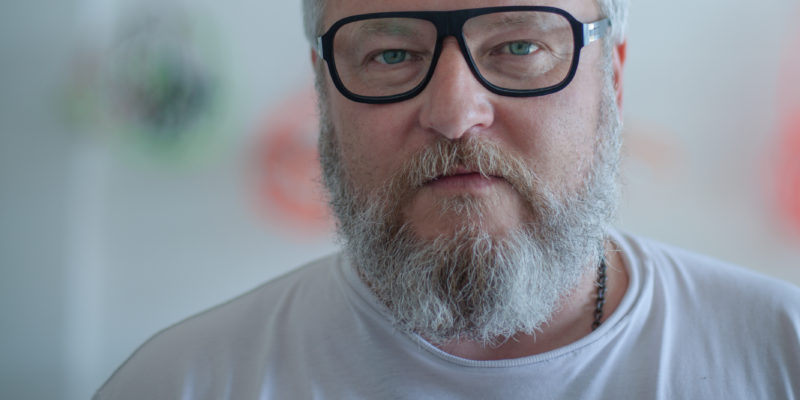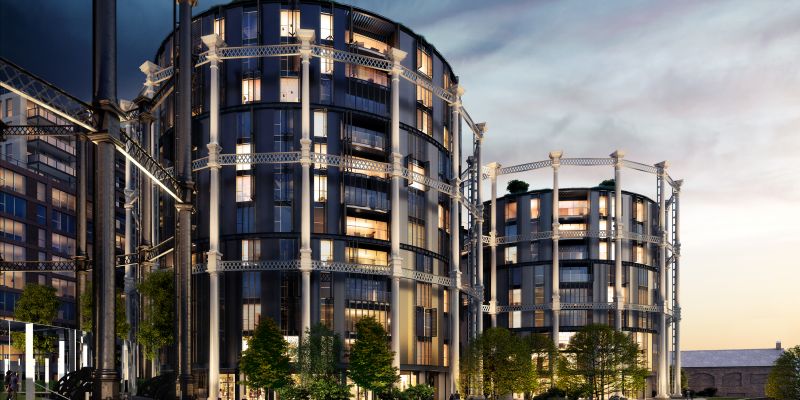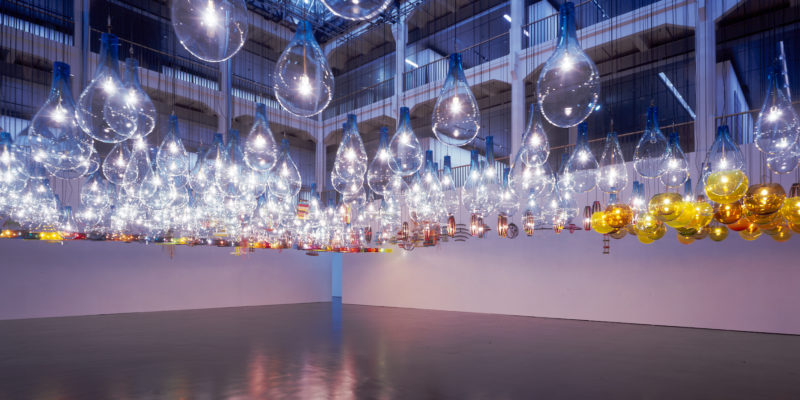Tobias Rehberger: magician, disruptor, prankster

Tobias Rehberger: magician, disruptor, prankster
The German artist Tobias Rehberger likes to bedazzle, bother and bewilder, but always in the best ways possible. Rehberger’s work hits the retina hard and fast and demands attention yet isn’t itself demanding, certainly not in the way that much conceptual art can be. His best-known work employs the graphic monochrome camouflage used on ‘dazzle ships’ in World War I, functional Op Art before the fact (in 2014 he was actually given his own World War I warship to moor on Victoria Embankment, painted with his updated dazzle design).
Rehberger constantly questions why and how art gets to be art, what special places and special people sprinkle that magic dust. And what happens when you make art part of the everyday. In 2015, for instance, he created Rehberger-Weg, a 5km walk that connects Germany and Switzerland and is dotted with 24 ‘signposts’, his outsize take on vernacular street architecture.
He is also an artist who thinks big and makes big, who knows how to work in a space and create space; as fascinated by the mechanics of design and architecture as any search for the sublime. He was, then, a smart choice to create a high-impact installation in the main lobby of Gasholders London, an apartment block housed in King’s Cross’ landmark Victorian gasholder triplet, now reinstalled overlooking Regent’s Canal, and designed by architects WilkinsonEyre.

A deliberate spanner in the works
Rehberger’s piece for Gasholders London, Almost Everybody is essentially 41 handmade hanging glass lamps, grouped together in five different interwoven clusters by colour (colour working here simply as a “compositional tool” says Rehberger, rather than carrying any deeper significance). Each lamp is drop-shaped and they vary in size and volume. Elegant and interesting enough. What elevates Almost Everybody is an intentional and carefully controlled flaw; a deliberate spanner in the works.
Only four of the five clusters of lights is on at any time and the use of sensors in the lobby means that the particular mix of illuminated clusters changes every time someone enters or leaves the building. “The constellation changes,” explains Rehberger. “Initially they might think there is a fault but after a few times of it happening, they understand that they are having an influence on the piece.”
Misfiring and apparently faulty wiring is something of a Rehberger trademark. “I like pieces that seem a bit faulty, that are doing things you aren’t in control of. Or it doesn’t seem that you are in control of.”
“Public art should be for people who don’t really know that much about art.”
Rehberger is well practised in creating art not just in public spaces but as public space itself. In 2009 he won the Golden Lion Award for Best Artist at the 2009 Venice Biennale for an optically charged but functioning café bar, his first experiment with dazzle camouflage. And in 2015 he recreated — in exact detail and including drafting in the owner/bartender — his favourite Frankfurt bar in a New York hotel as part of the Frieze Art Fair. Well, not exact detail. All of the bar’s walls and surfaces were covered in eye-popping angular zig-zag black and white stripes while the walls and floors seemed to be operating on slightly different angles to the norm, as if finding a Frankfurt bar suddenly landed in Manhattan wasn’t disorientating enough. And, with some qualifications, he is all for the introduction of more public art into the contemporary cityscape, inside and out.
“The more good art out there the better,” he says. For Rehberger the trick is to make art accessible and immediately engaging but also environmental; art that you can live with. “I think public art should be for people who don’t really know that much about art,” he says, “You shouldn’t have to understand the context or the references it is making to other art, it should just have a very specific quality. Then hopefully people will develop a certain relationship with it [and] maybe develop a wider interest in art.”
Rehberger understands that art set out in the wider world, passed by on the way to somewhere else rather than the final destination, has a different duty and should offer a different experience. “I’m interested in everyday experiences,” he says. “I don’t think that art should always be a struggle or a confrontation; that you have to sit and look at it for twenty minutes, unless you want to,” he argues. “It should be more than decoration but I also like art when you are not really aware of it… when it is just there, like your mother when you are a kid. You don’t see her all the time but you know that she is there.”

Rehberger argues though that public art, or environmental art perhaps, should be able to stand its ground and cope with changes going on around it. “It [art] should have some resistance. It shouldn’t be fragile and in need of protection. If someone graffitis nearby, you shouldn’t feel that you have to scrub it off straight away.”
Hopefully the lobby at Gasholders London will stay graffiti-free but Rehberger’s point is that art should have a sort of robust openness, an ability to connect and reconnect as the world changes around it. The art that successfully connects and makes a clear link to what has been, as well as what lies ahead, often does it with a judicious dash of craft.
This is certainly true of Almost Everybody; Rehberger worked with German glassblowers to create the masterfully hand-blown lamps. It is apt that Gasholders London is home to such an artwork, given the craftsmanship and passion of Yorkshire’s Shepley Engineers, who painstakingly refurbished the 123 cast-iron gasholders columns piece by piece over two years.
Craftmanship and the perfectly imperfect
As Rehberger says, conceptual artists have, until recently shied away from craft, for fear perhaps that any appreciation of the skill and hand-work might get in the way of the bigger idea. Thankfully, contemporary artists are now re-embracing and re-connecting with all sorts of craft processes. Rehberger is all for it. “I’ve been working with these glassblowers for twenty years but I think craft is now being re-introduced but in a conceptual way; there is a bit of a handmade moment.”
As cities are increasingly cleared of factories and the noisier and more bothersome forms of infrastructure (King’s Cross might be the ultimate expression of this kind of regeneration) Rehberger sees a need for craft, and craftspeople, to be given space. The urban environment should be cleaner and safer but not antiseptic and anodyne. “You don’t want to be next to a stinky, noisy factory but there has to be a mix. And I think city planners are beginning to think more about this. You are seeing more spaces for craftsmen and acceptance of the imperfect.”
Almost Everybody, then, is a piece that celebrates craft and imperfection; the human trace. And even, perhaps, that the striving for perfection, and the heroic near miss, is far more interesting that perfection itself.
This article first appeared in the winter 2017 edition of King’s Cross Quarterly magazine.